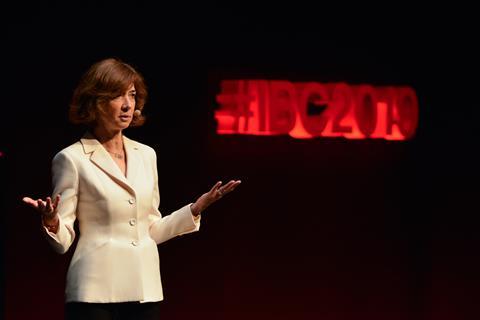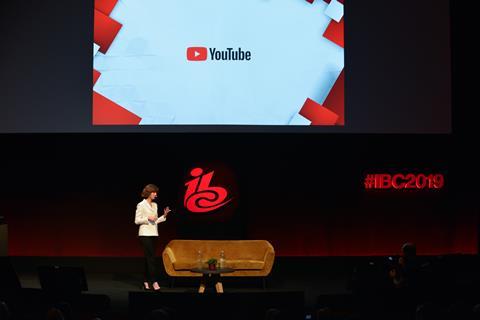- YouTube’s Cécile Frot-Coutaz opens IBC2019 conference
- YouTube becoming an “essential part” of pay-TV companies offering, she says
- Google-owned platform is investing in tools to remove harmful content

Opening the IBC2019 conference, YouTube’s head of content EMEA Cécile Frot-Coutaz urged media companies to harness the Google-owned platform to reach new audiences and engage with communities.
“Our partners in the pay-TV space are increasingly viewing YouTube as an essential part of their content offering.” Frot-Coutaz, who has more than 20 years’ experience in the TV industry, said she “couldn’t predict the incredible evolution of where content would go.”
The growth of global platforms such as YouTube and the proliferation of devices and emerging content formats bring opportunities for creators and media partners.
She added: “These creators are redefining the next generation of media,” with their contribution to local and global economies massive.
“In the EU alone the number of YouTube channels making six figures or more has gone up 30% in the last year.”
The content creators today “would not have existed elsewhere and are only possible on this platform,” Frot-Coutaz acknowledged with these shifts it also brings challenges.
- Read more: Interview with Cécile Frot-Coutaz
“As viewership migrates across platforms, formats, and screens it become increasingly difficult to measure. We are committed to working with the industry to address these.”
Pointing to the broadcasting of live events such as Coachella and Lollapalooza music festivals on YouTube highlights the fundamental shift of content to the platform from traditional linear broadcasters.
“The rapidly growing hunger for YouTube in the living room” is unprecedented with audiences, added Frot-Coutaz in the keynote that opened the first day of the conference
Addressing the challenges to privacy and harmful content on YouTube, she explained, “when you create a place that is designed to welcome many different voices,” those challenges will arise.
However, inappropriate content represents only 1% of all YouTube’s content and “we are working to reduce this number further.

“We are investing in number of ways to remove the content that violates our policies as quickly as possible and raise the profile of good voices especially in breaking news of author voices.”
YouTube allows creative experimentation on a global scale. Frot-Coutaz says she wants to have open conversation with content creators and traditional media companies to “unearth the next wave of YouTube moments.”
The ability to engage in content in ways never possible before opens the creativity and innovation industry wide.
When asked if YouTube is becoming a “new broadcaster” with its advertising model, plan for commissioning of content and burgeoning business strategy, Frot-Coutaz dispelled this, saying: “YouTube fundamentally is about providing the best technology to enable creators to find an audience and visa-versa; we have to stay at the top of our game to enable our ecosystem to flourish.”
Harnessing the platform is critical for broadcasters to engage with younger audiences, with more than one billion set top boxes in European living rooms, she points to the partnerships with Liberty Global, Sky and Vodafone. “Overall it means consumers are watching 215 million hours of content on TV screens and smart devices.”
YouTube’s mission is to be the best technology platform between content and audiences.
“The media industry creates ambition engaging and innovating content that can define cultures and bring people together,” concluded the YouTube executive. “Programming such as Eurovision, Champions League Final and Britain’s Got Talent this content can benefit from a platform built on cutting edge technology.”
























No comments yet